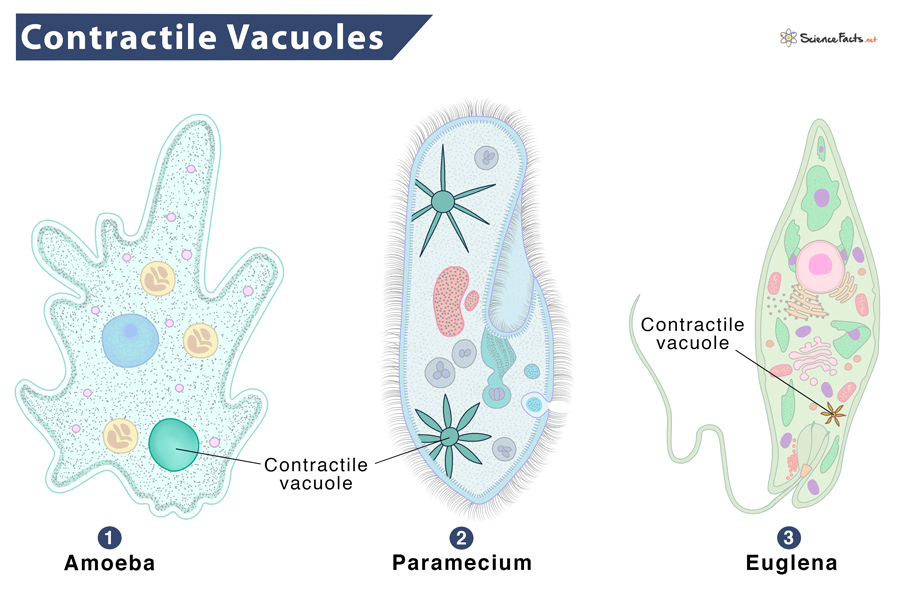Contractile Vacuole
Contractile vacuole is a specialized membrane-bound osmoregulatory organelle mainly found in microorganisms, like protists. As the name suggests, it contracts and expands to check the cellular water flow.
Where are Contractile Vacuoles Found
Contractile vacuoles are primarily found in freshwater protists, such as amoeba, paramecium, and euglena. They also occur in lower metazoans, such as sponges and hydras.
Function: What does the Contractile Vacuole Do
The contractile vacuole acts as a key regulator of cellular water flow, thus maintaining water balance in the cell.
As we know, the tonicity or the concentration of solutions should remain the same in the intracellular and extracellular space for the proper functioning of the cell. So, whenever there is an imbalance in solution concentration, the cells undergo a specialized process called osmoregulation. Osmoregulation is the process of regulating a constant osmotic pressure of the cellular fluid by controlling the water flow and solute concentrations relative to the surrounding.
In aquatic unicellular organisms such as amoeba, the cell remains hypertonic relative to its surrounding, that is, the inside of the cell has a higher concentration of solutes than the environment. As a result, the water tends to flow into the cell through osmosis, leading to cell rupture. In that case, the contractile vacuole contracts and works to pump out the water (systole). During this period of contraction, the vacuole expels water along with wastes outside of the cell. On the other hand, if there is too much water in the cell, it will keep swelling until eventually, it ruptures, destroying the cell. In this condition, the contractile vacuole expands and takes in the excessive water (diastole), maintaining the cell’s concentration.
-
References
Article was last reviewed on Thursday, February 2, 2023




